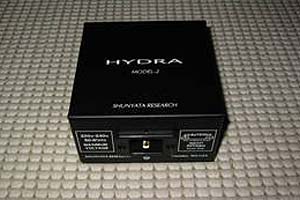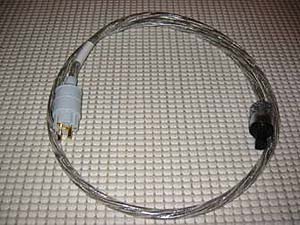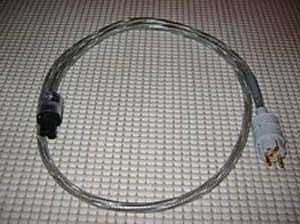The cables, power cords and
conditioners are my favourites, yes. They are easy to test by
listening and often the results give nice surprises.
This
test did not make an exception.
Shunyata Research is
a very well
known audio/video power-distribution and cable system trademark
in the world. Especially their power line products have been
very successful. Many famous recording, film, mastering and music
studios use widely Shunyata’s power line products
extensively. Also many
audio publications have praised them regularly. So, I had a high
interest for testing them in my audio system.
It would be a
waste of review
space to copy the exact specifications and the technology talk
from the Shunyata site, where they are excellently introduced.
So, anyone more interested in those issues, please check the
Shunyata site www.shunyata.com.
I had an opportunity to test the
Hydra 2 and couple of power cords, Diamondback, Copperhead,
Taipan VX & Alpha and Python Alpha, in my 25 square meter
listening room. In this review I mainly focus on the Hydra 2,
Taipan Alpha and Copperhead power cords.
The used reference system
was:
- Audio Aero Capitole Mk II
digital source
- Gamut D-200 Mk III amplifier
- Siltech Forbes Lake
interconnects
- Transparent Reference XL
(MM) speaker cables
- Transparent Power Isolator
XL for the digital source and amplifier
- Transparent Reference Power
Link power cords
Hydra 2

The Hydra 2 is Shunyata’s
smallest power conditioner, but it has nearly same features as
its big brothers have. The same Hydra design goals have been
used through the power conditioner product line. The goals are
very reasonable and justifiable even for every power conditioner
vendor.
Primary design goals:
- High power – non current
limiting
- Effective transient and
surge protection
- Improved resolution and
noise reduction
- Absolute reliability and
trouble-free operation
The difference between the
cheapest and more expensive models are mainly
due to the internal bus construction, the Venom Noise Filter element
amounts, the “Trident Defence System” and the material and
construction of the chassis.
The size of the box is about 13 cm x 7.5 cm x 13 cm. The finish is nice and
the quality of the parts is first class. The Hydra 2 does not
have an integrated wire to the wall outlet; neither have the more
expensive models. It may be an advantage or a disadvantage; it
depends on the needs of the user. Anyway, one needs two power
cords until the power is in the destination. I used the
Copperhead to the wall outlet and all the power cords mentioned
in the forewords from the Hydra 2 to the audio equipment. The
Hydra 2 has two Shunyata Venom outlets, which really are the
best I’ve seen and the same are used in the more expensive
models too.
Sound
I tried the Hydra 2 for the
digital source and amplifier. It soon became clear that this
product really works. The punch, dynamics and balance of the music is
real, in fact in the class of the best conditioners I’ve heard,
including Transparent Power Isolator XL. The clarity of the
music presentation was high as well and the transients and
details were right there as expected. I noticed one can really
enjoy the music at the highest level with the Hydra 2 and it
seems to work equally well with the digital source and
amplifier, at least in my case. So, nothing special bothered me.
Well, where is the difference
then when compared to the Transparent Power Isolator XL or is
there any? Yes, there is, but they are relatively small ones, at
least in my system and with my ears. The clarity and
transparency of the music is even better with the Power Isolator
XL. The spatial information was slightly better presented too
when the Transparent was used. But there is nothing to shame by
the Hydra 2! Transparent Power Isolator XL costs 2600 euros and
the Hydra 2 approximately 500 euros!? So, the price difference
is huge and it is natural that there are some audible
differences too. The Isolator XL has one extra benefit for me
too: it has an integrated cable to the wall outlet. Because
of this this I need to have only one extra power cord!
Conclusion
In the end the Transparent Power
Isolator XLs gave me a little more and there was no sense to
exchange or sell them. I suppose that for example Hydra 8 will
give some more audible value when compared to the Hydra 2, but
how much it is hard to say. It surely depends on the quality of
the electricity fed into the system. So, everyone interested must try those
products oneself! Anyway, I would rank the Hydra 2 as a Very
Highly Recommended component, nearly a bargain!
Taipan Alpha and
Copperhead Power Cords

Taipan Alpha

Copperhead
During writing of
this review
Shunyata seemed to change their power snakes product line a
little. Today there are two lines: Helix series Power Snakes and
Shielded series Power Snakes. The Helix series has tree cords:
Taipan, Python and Anaconda. Correspondingly the Shielded series
has tree cords: Venom, Diamondback and Copperhead. Still the Vx
and Alpha division is continued in the Helix series but the
cords supposedly have a same kind of the black look. Some slight
improvements have been done for some cords too. The 1.8 m Taipan
Helix Alpha costs 790 euros and the same length Copperhead 450
euros.
The Vx models are noise reduction cords for the sources, solid
state amps and preamps. The Alpha models are pacesetters for the
high current devices. Anyway, Shunyata says that one can try
different variations and the most expensive power cord is not
necessarily the most suitable in every case!
The construction of the Shunyata power cords is convincing. The
Venom connectors are in fact the very best I’ve met! Also the
shielding, materials (CDA-101 copper as conductors and Teflon as
dielectrics) and the quality of the work seemed to be excellent
too. So, the result of the cord construction is naturally very
confidence-inspiring. The Taipan Alpha is a starter of the highest power cord
class; there are the Python and Anaconda above it. The
Copperhead is an all-round cord and the top model of the
shielded series.
Sound
After having
tested the Hydra 2
with the power cords, I tried all the cords available with my
Isolator XLs. I can see many of the dealers and enthusiasts
being doubtful about this
kind of trial, because it is widely accepted one should have
the conditioners and cords from the same vendor. Well, I had
courage to try to break this myth. I also tried
the
amp-specific cords with the digital source too. The results were
very interesting.
First a comment
on the Taipan
Vx cord. I tried it with my CD-player but in my opinion it
didn’t give any advantage when compared to the other cords. It
seemed that the cleaning features of the Vx cord were not so
remarkable at least in my system. On the contrary the Taipan
Alpha and Copperhead cords gave slightly more slam and power to
the music! I did not notice any significant differences whether
the Taipan Alpha or Copperhead was used!?
Then I tried the
Diamondback, but the sound became a bit leaner. So, the
Copperhead took its place with the player.
Then I tried the cords with my amp and the results were clear as
well – the power amplifier seemed to need fast current flow as
expected. The transients, dynamics and the speed were the best
with the Taipan Alpha. When I tried the Python Alpha the sound
became fuller and richer but that was not the way I wanted to
go. I preferred the Taipan Alpha’s more realistic and sharper
presentation. So, the Taipan Alpha was the best cord for the
amplifier.
So, which were the differences
between the Transparent Reference Power Link and Shunyata cords?
The Reference Power Link is a very good power cord. It works
everywhere with no problems. Still I found slight improvements
in the transients, dynamics and power when I used the Taipan
Alpha or the Copperhead. The other tonal areas seemed to be
rather equal. I think the Transparent’s small filter box will
not give any special benefit when the high quality conditioners
are used, the other features may become more significant - of
course this is very much case dependent.
Conclusion
I found the best results with the
Taipan Alpha and Copperhead cords! These are very well made and
very high quality power cords, which clearly have their own
strengths and seemingly no significant weaknesses. Again, I’ll
rank these cords as Very Highly Recommended
in systems where the high quality power
conditioners are already used!